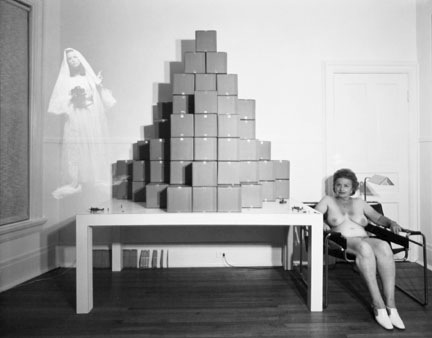About the Photographer
Krims, Les
American, b. 1943
Born in a working-class neighborhood in Brooklyn, Les Krims pursued his education in New York City, earning a BFA at the Cooper Union (1964) and an MFA at Pratt Institute (1967). Following his first solo exhibitions in 1969, Krims acheived recognition in the 1970s as one of a number of young photographers staging scenes for the camera. Calling his works "fictions," Krims devises sensational tableaus that scrutinize and satirize various aspects of liberal society, addressing topics such as consumerism, feminism, and views of race. Often depicting nude figures in absurd, comical, or deliberately shocking situations, Krims's photographs are a provocation of gentrified taste. Not unexpectedly, his work is controversial, and has at times drawn accusations of misogyny or prejudice. As a self-proclaimed conservative, Krims's most pointed critiques are directed at leftist ideologies, and at prevailing photographic traditions — such as "socially concerned photography" —which he describes as a form of propaganda.
In the late 1960s, Krims began teaching photography at Pratt Institute and Rochester Institute of Technology, and since 1969 he has been a professor at the State University of New York at Buffalo, where his students have included artists such as Cindy Sherman. Nevertheless, he is highly critical of academia and what he describes as its ideological bias. In the series Academic Art (1975-1978), Krims parodies the trends and tenets of university art programs by photographing scenarios that were fabricated by his students, whom he asked to interpret various art movements as articulated in academia. In the image Boxes, Mary, Miracle (1975), for example, a geometric sculpture made of stacked cubes is juxtaposed with a "miraculous" apparition and a middle-aged woman sitting naked in a chair. The image lampoons the implication of a quasi-spiritual experience and the rhetorical emphasis on a phenemonenological encounter with the art object in relation to the viewer's body.
